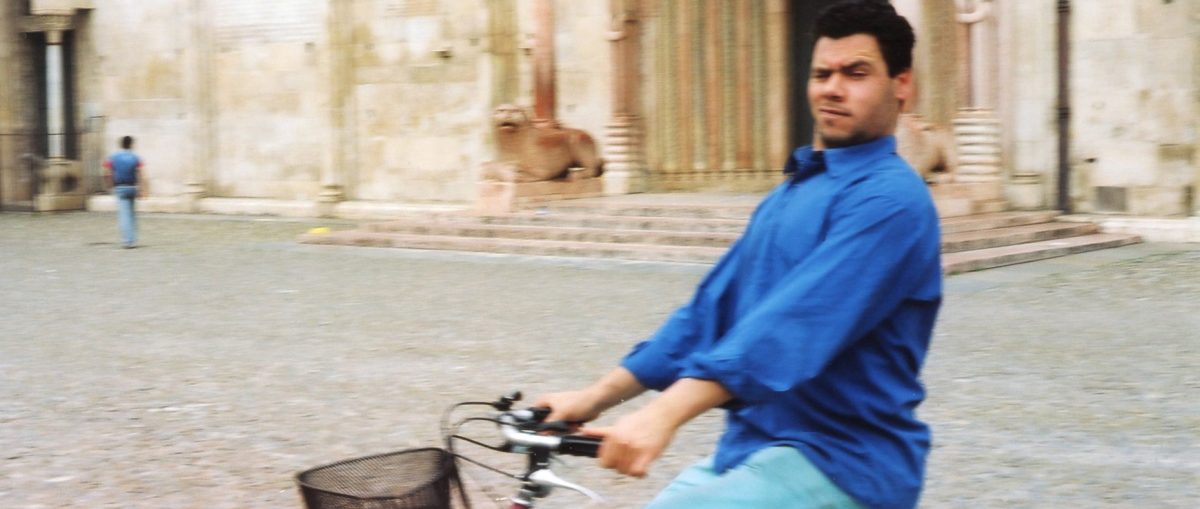_________________________________
Jackson C Frank: Catch a Boat to England
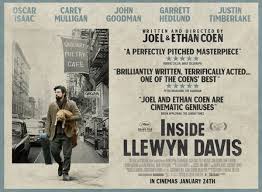 The Coen Bros Inside Llewyn Davis – some aspects loosely based on the early life of Dave Van Ronk – might have been an even more interesting film of a person and a time and a place if it had drawn on the story of another, younger, American folk singer. Unlike Dave Van Ronk he wrote his own material and Nick Drake recorded more tunes of his than any other singer-songwriter of that era. The tracks from his one, and only LP, produced in London, are now registering over 100,000 hits on You Tube. His name was Jackson C Frank.
The Coen Bros Inside Llewyn Davis – some aspects loosely based on the early life of Dave Van Ronk – might have been an even more interesting film of a person and a time and a place if it had drawn on the story of another, younger, American folk singer. Unlike Dave Van Ronk he wrote his own material and Nick Drake recorded more tunes of his than any other singer-songwriter of that era. The tracks from his one, and only LP, produced in London, are now registering over 100,000 hits on You Tube. His name was Jackson C Frank.
“FRANK, Jackson C (b. ’43, Buffalo, NY) USA singer/songwriter infl. in London during mid-’60s folk boom. Songs covered by Sandy Denny, Bert Jansch, Fairport Convention; Frank himself made only one LP Jackson C Frank; ’65, reissued ’78: cult classic prod. Paul Simon, second guitar played by a young Al Stewart; incl. best known song ‘Blues Run The Game’ (world-weary gem of genre), eight other originals. Regular feature on folk club circuit; once shared flat with Denny, Simon, Art Garfunkel; began work on second LP ’68 but never completed it. Said to have been badly injured in fire at Woodstock home. Jansch called him ‘as influential as Bob Dylan’ in mid-’60s; evidence of album suggests great ability unfulfilled.“
– unattributed entry in Penguin Encyclopedia of Popular Music, First Edition, 1990.
He’d caught a boat to England in early 1965, and it was briefly in England that he made his mark. By the mid 1970s, back in the U.S., he had virtually disappeared off the scene and his life became a sad and tragic decline. He died in near obscurity in 1999. This is a recollection of those autumn months in 1965 that were leading up to the release in December of his CBS album, produced by Paul Simon, and beyond into the early summer of 1966, when Jackson moved out of his Twickenham, London flat, possibly to be with Sandy Denny.

In 1965 in Britain women still wore stockings and suspender belts. Men had to buy condoms in gents barbers shops. Tears was the biggest selling hit single, sung by the north of England comic Ken Dodd. The National Anthem was still played at the end of the pictures and Le Patron was shouted at, after watching Judy Dench in Four in the Morning, for not standing still as it played, as he made his way to the exit. (In anticipation of the National Anthem most cinema goers quickly shuffled out of the fire exit doors into the street, or the foyer, as the credits rolled, whilst some women discretely headed for the Ladies to re-arrange their underwear after two hours of snogging and groping in the back row).
And an American, Jackson C Frank sailed on a boat to England to buy a 1952 Bentley, a long wheel base Land Rover and an Aston Martin DB5. He also brought a Martin guitar with him, and Katherine Henry his girlfriend came too. (Well… that’s the Wikipedia version, and that of some other potted biographies.)
In the U.S. in 1965 the Democratic Party government sent 50,000 troops to Vietnam, as American involvement increased from USAAF bombing and reconnaissance. In the American South civil rights activists were killed by white supremacists, and in the Watts area of Los Angeles, in August 1965, 28 people died in race riots.
The biggest film of the year was Mary Poppins, making more money than the other big 1965 hit film, Sound of Music, both featuring Julie Andrews. Dr Zhivago with Julie Christie and Omar Shariff was popular too. The Beatles second feature film – in colour – Help! had come out that summer. Clint Eastwood, the former TV cowboy, was having his second significant big screen outing in For a Few Dollars More (A Fistful of Dollars had been released in 1964). Away from the mainstream there were interesting films such as Roman Polanski’s Repulsion, exteriors edgily shot in the streets of South Ken, and Michael Caine was on the ascendency in The Ipcress File, a year before 1966’s Alfie.
But still you needed to go into a gents hairdressers to furtively buy condoms (and not get a haircut). And Levi jeans were hard to find (and expensive).
Jackson C Frank’s black Bentley saloon, his dark green Land Rover, and silver Aston Martin DB5 were parked outside 50 Cole Park Road, St Margarets, Twickenham. Cole Park Road was a leafy suburban road of mostly large detached houses, built in the interwar period on the fields of Middlesex, an area that soon became known as south west London.

Jackson could have flown into Heathrow, just a few miles to the north north-west of Twickenham. (Also built, after the Second World War, on the meadows of Middlesex.) Pan Am had started the first regular New York – London Heathrow flights in 1958. Jackson could have afforded the flight.
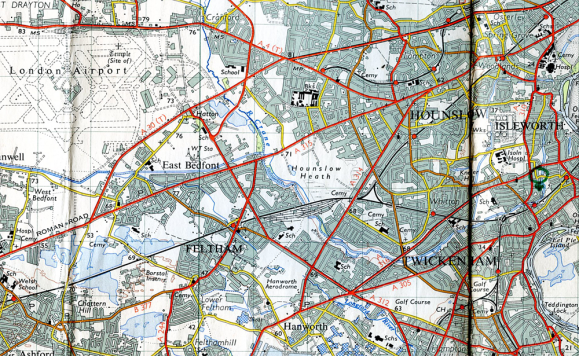
When he was ten he was attending a school in Buffalo, New York.
“The brand new school was made out of brick but it had a wooden annexe that was used for music instruction. It was heated by a big furnace. One day during music lessons the furnace blew up. I was almost killed on that day. Most of my classmates were killed. I spent seven months in hospital recovering from the burns.” (Quoted in CD liner notes by Colin Harper, Jackson C Frank, Blues Run the Game, “Expanded Deluxe Edition”, 2003)

In 1964, at the age of 21 Jackson was entitled to the insurance payout from the fire: $110, 500. He and a friend headed for Toronto, Canada, spending as they went “… I bought a Jaguar straight out of a showroom.” Returning to Buffalo he decided to catch a boat – and not take the plane – to England, in April 1965.
Jackson’s life around this time is not – it seems – quite as Wikipedia, and some other sources, report. He did catch a boat – the Cunard Queen Elizabeth – from New York to Southampton, but it was in February, and not April. And the reason he bought a ticket was because his girlfriend of two years, Katherine Henry, was looking for a way to get out of the relationship. Unable to say she was calling it off, she booked a ticket to escape to England. But when Jackson found out, he booked a ticket too. She still found it difficult to say “It’s off”, and she recalls they spent a lot of the Queen Elizabeth journey in one of the onboard bars, drunk. She told her story in 2009 to Andrew Male in Mojo 186. (1)
They stayed in the The Strand Palace, which she recalls was across the road from the Savoy, where Dylan had stayed. They lived in Twickenham, until she returned to the U.S. in June 1965, to have an abortion. Jackson accompanied her. She didn’t come back. Jackson did. She said she found his intensity, his imagined slights too heavy. She says there was an element of paranoia – centred on Jackson imaging that she was only interested in him because of his insurance money – that was not easy to deal with. But they had some good times, too. She described their few months in Twickenham as pretty domesticated. They occasionally went off on a trip, once to Whitby on the Yorkshire coast.
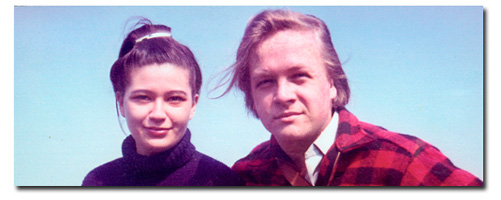
Attributed to/Source: Richard Stanley
At some point they met Tom Paxton, who was also over from the States, with his wife and living in London. Paul Simon was another young singer songwriter who had arrived in London in 1964. There was a lively folk club scene in Britain particularly in London. Besides the traditional folk scene, there was an emerging folk new wave of interesting guitar stylists and singer-songwriters. Davy Graham’s Folk Blues and Beyond had been issued on Decca in January 1965, and Bert Jansch had his first LP out on Topic by the Spring. 

 There is no indication of where Katherine and Jackson were living those few months together in Twickenham. But when Fan, Pussy, Sue and Doreen moved into the ground floor of 50 Cole Park Road in September, 1965, for the second year of their teacher training at the nearby all female Maria Grey College, Jackson was living upstairs with a young English woman called Caroline, and the three cars were parked outside. No biographies of Jackson mention Cole Park Road, or Caroline.
There is no indication of where Katherine and Jackson were living those few months together in Twickenham. But when Fan, Pussy, Sue and Doreen moved into the ground floor of 50 Cole Park Road in September, 1965, for the second year of their teacher training at the nearby all female Maria Grey College, Jackson was living upstairs with a young English woman called Caroline, and the three cars were parked outside. No biographies of Jackson mention Cole Park Road, or Caroline.
Up until the summer of 1965 Jackson was an unknown singer-songwriter. Although he’d played with friends in Buffalo he was reportedly training to be a local journalist when he received his insurance pay-out. Katherine recalls that when she moved back to the States she heard that he had started playing a lot more in folk clubs: her leaving him had broken the couple cocoon the two of them were in. Although shy, he started playing regularly at Les Cousins, and other London folk clubs. He started to be a face on the scene.
He seemingly would give visiting American folkies – including Dave Von Ronk – a drive around London in one of his cars.
Although he had been known to have been singing traditional folk material in Buffalo Le Patron speculates that his self-penned repertoire expanded on the back of Katherine leaving him. Catch a Boat to England was possibly written just after they arrived in England, when he was still with Kathleen, as was Yellow Walls, but other songs, for instance You Never Wanted Me, is a cert to have been written after she decided to stay in the U.S. in June. He recorded it in December.
Le Patron first visited 50 Cole Park Road in late September, 1965, and moved in in early November, he and Doreen having begun a relationship. The girls went off most mornings to college whilst Le Patron had already left a couple of hours earlier. He was working as a labourer in the building maintenance section of a slightly dodgy property company, on jobs all over London, from Chelsea, to Finchley to Walton on Thames.

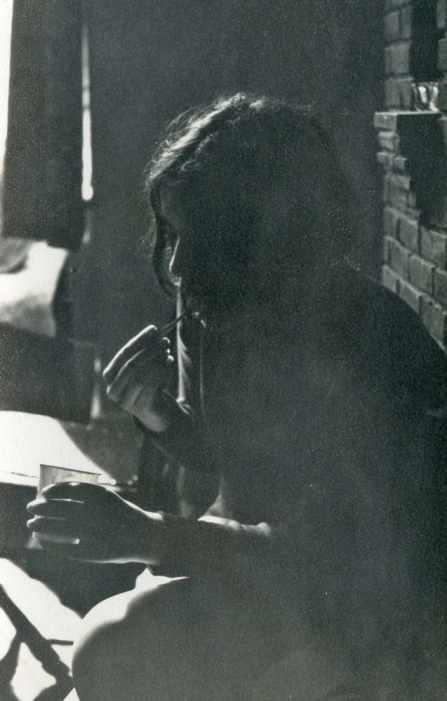

Fan and Kate, after a Saturday shopping raid on Biba’s, Kensington. Yoghurts from Express Dairies.
It was a peculiarity of the time that there was a vibrant music scene in the Twickenham/Middlesex, Richmond/Surrey, west south west London area. Down the road in Richmond the Stones two years before had been regulars at the Station Hotel, and their spot had been filled by the Yardbirds by 1965. The Who regularly played to the north in Wealdstone and there was a regular venue at the Jolly Rogers, Isleworth, with the likes of Geno Washington and the Ram Jam Band, and Zoot Money and the Big Roll Band playing in the area. Eel Pie Island, in the Thames, was a fifteen minute walk from Cole Park Road, where Long John Baldry and the Hoochie Coochie Men played, along with visiting black blues and folk artists such as Jessie Fuller.  Around this time Sandy Denny, still a nurse, was singing solo in the Kingston folk club, and Maria Grey college that Doreen, Fan, Sue and Pussy, and Kate, attended also regularly booked folk singers.
Around this time Sandy Denny, still a nurse, was singing solo in the Kingston folk club, and Maria Grey college that Doreen, Fan, Sue and Pussy, and Kate, attended also regularly booked folk singers.
One Saturday night at the Maria Grey College Le Patron saw a double bill of, first on, a young lean Bert Jansch, and after the interval, Paul Simon. Although it wasn’t a contest, Bert won it by a mile. Bert just played, whilst Paul Simon pontificated and blethered between numbers. He was wearing the “I’m a purist folk singer” halo (he had the neat haircut and the fine wool pullover to go with it) and he got tore into Marianne Faithful for being on RSG (Ready Steady Go) the night before, covering something he used to sing, but she used strings!!! – lush orchestral strings!
It sounds as if anyone in work and earning, and at the age of 20 and into music would be having a rip-roaring time living in the Twickenham area in 1965. But it wasn’t necessarily like that. Besides anything else, even if it did cost two to ten bob (ten to fifty pence) to go to listen to a band or individual, the going rate for an unskilled worker, whether in the building trade, or working in shops or cafes hovered around 5 bob (twenty five pence) an hour. Le Patron was on 5/4d an hour.

A take home pay of around £10 didn’t go far, particularly if you weren’t living at home and having to pay rent. For a single person too, income tax ferociously ate into your gross earnings, or that’s how it seemed when you worked with seasonal students who’d get all they’d been taxed back in the autumn, or aware of what the married blokes take home pay was.
Le Patron was, too, (besides being knackered after work) ploughing the anti-social, introverted furrow at this time, labouring over books on existentialism, and other mind-expanding tomes that he hoped would explain what it ‘was all about’. He enjoyed the company in the downstairs flat, and one of the girls would ask him to do posters for the folk gigs at the college. But like Jackson and Kathleen had been, he and Doreen were in their own couple cocoon, which was no bad thing.
Le Patron had very early on, when asking who the expensive cars belonged to, learned from the girls that an American folk singer lived upstairs, with someone called Caroline. Le Patron doesn’t know what the furrow Jackson was ploughing, but it was a quiet one. He was rarely seen and rarely heard. No sound of him playing, of trying out a new song, no sound of a radio. Very quiet. No creaking floorboards above. No crashing up and down the stairs. The recollection was that he was shy, that he was polite, and he had a warm fleeting smile. You rarely caught a snatch of conversation between him and Caroline upstairs, and they never used the downstairs garden for drying clothes, or relaxing in the sun come Spring and early summer 1966.
Caroline was a southern Home Counties young woman, with the good bone structure, and the quiet air of someone who had been to a girls boarding school (and hadn’t rebelled). And yet, by living with a man and not being married, and living with an American, and a folk singer, even if he had money, was rebellion enough in 1965. She had dark, straight hair, and like Jackson was quiet. In her case maybe it was Home Counties reserve, rather than shyness. Jackson was 22 at this time, and she was around the same age.
As noted, Le Patron was ploughing the anti-social furrow. It would be the girls who would nip upstairs to ask Jackson to sign their copy of his just released LP, or to get a visiting Tom Paxton to sign a poster Le Patron had done for the gig he’d just done that evening.

“I was in London/Richmond/Soho during 65/66. One evening I was performing playing blues at Les Cousins. Al Stewart was also playing that night – and after my set I was approached by the legendary Judith Piepe who asked me to move in with her, Paul Simon, Al Stewart – and Jackson C Frank. For reasons that now escapes me I said ‘No’ – I must have been mad. This was before the album (Jackson C Frank) but after Bert and John (Renbourn) had started singing ‘Blues Run the Game’. I used to hang around Potters Music Shop at the bottom of Richmond Hill where Jackson used to trade guitars. One of my friends bought one of his Martins.
I remember a particular night at Maria Grey College in St Margarets. The star performer was Tom Paxton and I found myself standing next to Jackson in a very crowded room. I was struck by the severity of his scars – and suddenly he turned to me and said that he just had to get out – NOW. It seemed to me at the time that he was claustrophobic – at the time I put it down to the effect of the fire.” – David Freeman (2)
The girls had a party one Saturday evening, either just before Christmas, or just after the New Year, 1966. Jackson and Caroline would have been asked if they wanted to join in, but they kept themselves to themselves. In Jackson’s case, I’m sure out of shyness. Johnny Silvo was there, playing with two others, possibly Wizz Jones and Diz Disley. Le Patron can’t quite remember. A memory of a couple of guitars, one of them possibly a 12 string, and a mandolin. And wearing a bright red Guardsman tunic there was Jeff Beck, the first time Le Patron had seen anything like it. Jeff was there because he’d been asked by a bloke called Bill who was going out with one of the students from the college, and had sung on the chorus of the Yardbirds For Your Love that caused Eric Clapton to decide to move on, and Jeff to become the lead guitar.
Le Patron, during the party, going to the toilet overheard Caroline and Jackson upstairs, leaning over the banisters of the landing, talking about the music: Caroline: What do you think of it. Jackson: Yeah, nice. That was it. Just crumbs of memories of Jackson.
Or the time the front door bell went one Saturday afternoon, and no-one being in, Le Patron answered it. One door bell for both flats. Le Patron opened the front door to two policemen, who were looking for the owner of the cars outside. They wore flat peaked hats, like the drivers out of Z Cars, and a brand new Police Zephyr was parked opposite. Le Patron went up the wide Wilton carpeted stairs and knocked on a door off the landing and Jackson opened it, listened to what Le Patron said, smiled with a nod, and came down. Le Patron went back into the little room Doreen and he shared. And eavesdropped. The little room happened to be the one closest to the front door.
They politely pointed out that two of the cars didn’t have Road Tax, and therefore shouldn’t be parked in the road. That bit over, they asked about the cars, what the top speed of the DB5 was, and all being car enthusiasts Jackson in turn asked about their police Zephyr, was it the latest model….. and so on.
Jackson’s LP was recorded for CBS in their London studio, and produced by Paul Simon. It came out in December 1965, and the girls bought it, and Doreen and Le Patron bought it. Le Patron liked it enough, but emotionally he was too cut off to really hear and feel the intensity of the lyrics. He preferred Davy and Bert’s LPs. As Life is the Great Educator, and not books on existentialism, the emotional power of the lyrics now roots an older Le Patron to the spot, particularly Here Comes The Blues, and Yellow Walls.

In the late Spring, early summer of 1966 the news filtered down from upstairs that Jackson and Caroline were moving out. It became known that they were splitting up. The cleaner reported that Caroline was too good for Jackson. There had been no raised voices, no banging doors. Always the same peace. No fore-warning. There was a cleaner for 50 Cole Park Road, as employing one was a condition on the lease, for both flats. The house was owned, it seems, by a BOAC pilot, who’s austere and unsmiling wife would periodically turn up for a house inspection.
With the girls being at college during the day, and Le Patron being out at work, one day we returned to an empty space in front of the house where the cars used to be, and a couple of tea chests in the downstairs hall with a note to say “Help Yourselves”. It was mostly bits of crockery, and kitchen utensils. Amongst it Le Patron found Jackson’s AA Member’s Handbook for 1965. With its town and city centre maps, and distances between towns, and the atlas, Le Patron figured that it would be handy when hitching, so he took it.
At present there is no note or biographical detail of where he moved to next in London, nor is it clear if he and Sandy Denny moved in with each other. On the latter the probability seems that they didn’t. Neither is it known if Sandy, wittingly or unwittingly, was the cause of the separation between Jackson and Caroline. Or whether, like Katherine, Caroline found aspects of Jackson’s personality ‘difficult’.
The girls and Doreen and Le Patron moved out around late June/July and went their separate ways, Doreen deciding to give up teacher training. By 1967 Doreen and Le Patron had moved to Glasgow, and discovered one or two folk there had heard of Jackson C Frank – and what was to become one of Le Patron’s best friends even had a copy of the LP.  The signed copy of the LP that Doreen and Le Patron had disappeared in a squat.
The signed copy of the LP that Doreen and Le Patron had disappeared in a squat.
Over the years you’d bump into someone who knew his music, and you’d both ask: “I wonder what happened to him?” Occasionally there would be something on the telly to remind you of him: Billy Connolly holding a copy of Jackson’s LP, and saying how great it was. What happened only started to trickle out on the back of interest in Sandy Denny a while after her death, and the growing reputation of Nick Drake, decades after his death.
The 2003 double CD release of Blues Run The Game ‘Expanded Deluxe Edition’ on Castle, with liner notes by Colin Harper was the start of the wider interest in Jackson. Colin highlighted the role of Jim Abbott who befriended Jackson and found him sheltered accommodation in Woodstock. (3)
The awareness of Jackson accelerated with the CD releases of Where The Time Goes, Sandy ’67, (2005) and Family Tree, (2007) private recordings by Nick Drake mostly from 1967 and 1968. The Sandy Denny material was drawn from albums she did with Alex Campbell and Johnny Silvo in 1967. She was going out with Jackson around this time. She recorded Jackson’s You Never Wanted Me with Alex Campbell, and Milk and Honey with Johnny Silvo. (4) There was an underlying streak of melancholy in many of Sandy’s songs, typified in her most well known tune Who Knows Where The Time Goes, which she had already written by 1967. Maybe that was something that drew the two of them together for a while.
Nick Drake recorded on his Philips cassette recorder his renditions of Jackson’s Here Comes The Blues, Blues Run the Game, Milk and Honey, and the traditional song Kimbie, in the style that Jackson had recorded it. Robert Frederick in liner notes draws particular attention to Milk and Honey:
“The unusual melodic phrasing beginning on the third beat of the measure, the guitar picking patterns, the sense of embracing sorrow and accepting loss, even the lyric references to seasons – all of these can be found in Nick’s later songs. In fact, he could have been using Milk and Honey as a template when writing Day is Done – these two songs are musically so similar.”
Like Peter Green, and Nick Drake, for Jackson C Frank, the blues was not a musical style that you picked up and put down at random. It was not a ‘lifestyle’ choice. The explosion at his school caused more than physical scars. The blues, unfortunately for him, truly ran the game. But like Peter Green and Nick Drake he has given a lot of people a lot of pleasure on a scale over the years he could never have anticipated when living in a London suburb in the autumn of 1965.
And you don’t need to buy condoms in gents hairdressers anymore. Or stand for the Queen at the pictures. And black Americans study with white Americans together in southern schools and colleges; can sit where they like on public buses, and use the same public toilets and eat in the same road-stop cafes.

And Medgar Evers, who Jackson sang about in Don’t Look Back would have been vindicated, and probably amazed at the man currently using the Executive Toilet in the White House.
There’s still the nuclear weapons (East and West) and excursions into other lands by the major former Second World War Allies, still looking after their interests: Russia, the U.S.A, Britain, France…. Oh well. A step at a time.
Notes
The two most interesting, and probably most accurate recollections of Jackson in London at this time, and after, are the Mojo interview with Katherine Henry, and a recollection by John Renbourn that Le Patron has unfortunately mislaid, but is online somewhere.
The Le Patron recommended CD of Jackson is Jackson C Frank, on Earth Recordings, 2014. This is the 1965 album. The 2003 double CD on Castle – which includes the album – diminishes Jackson’s work for including material that, with one or two exceptions, would never have been issued if he were still alive and well. And that includes the single version of Blues Run The Game, that few liked when bought back in 1965.
Added January, 2017. Blues Run the Game, a film about Jackson C Frank is currently in production, directed by Damien Aimé Dupont. A trailer is here: https://vimeo.com/184539090
Footnotes
1. The Mojo interview with Katherine is HERE.
2. The Dave Freeman recollection is from www.hut-six.co.uk/jcfrank. At the home page click on Link to Memories of Jackson.
3. At the time of writing (May, 2014) the CD is available second-hand at daft prices: £80 upwards! But it is available, or was, as a download from iTunes. The Earth Recordings CD (see above) is available at approx. £8.
4. One of those curious associations, that always crops up, that Johnny Silvo was downstairs and Jackson was upstairs at Cole Park Road, and eighteen months later he is accompanying Sandy Denny singing one of Jackson’s songs.
My thanks to Doreen for sharing her memories of the Cole Park days. And Kate, Fan, Pussy and Sue – if you’re still around – do get in touch.
